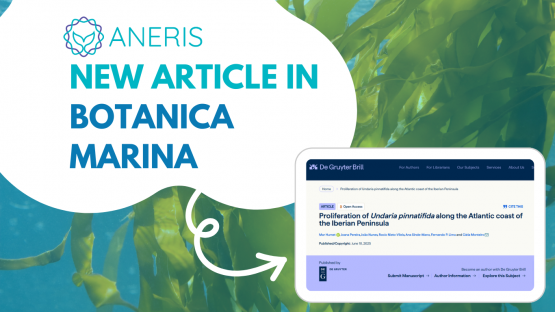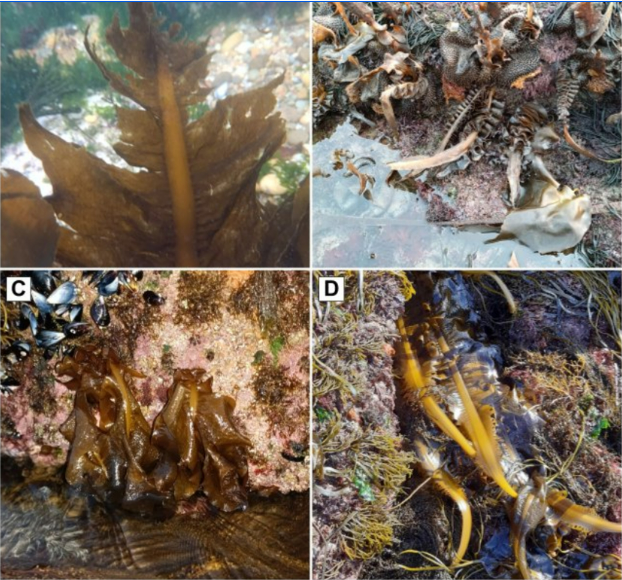
New article on invasive species of kelp across Spain and Portugal
A recent study, supported by ANERIS and published in early June in "Botanica Marina," sheds light on the distribution and expansion of the invasive kelp, Undaria pinnatifida, along the Atlantic coast of the Iberian Peninsula. The findings highlight the adaptive nature of invasive species and their potential to disrupt ecologically and economically important coastal areas.

Specimens of Undaria pinnatifida found in: (A) Homem do Leme, Portugal (sourced from MINKA, ©juliana09); (B) Praia Norte, Viana do Castelo, Portugal (M. Humet); (C) Muros, Spain (A. Sinde-Mano); (D) Ilha de Arousa, Spain (sourced from iNaturalist, ©javsagg34).
The 2024 survey, which encompassed 59 locations across Spain and Portugal, revealed a notable increase in the presence of Undaria pinnatifida in Portugal since its initial record. Researchers also reviewed historical data to understand the changes in the invasive algae's distribution over time.
While Undaria pinnatifida currently co-occurs with native kelps and doesn't yet dominate established communities, its continued spread is a cause for concern. The study suggests that environmental conditions and interactions with native species may be influencing its distribution, underscoring the need for further investigation.
Given ongoing environmental changes and human-mediated dispersal, continuous monitoring of this invasive species is crucial to track future range shifts. The study also emphasizes the valuable contribution of citizen science data in enhancing the spatial and temporal resolution of non-indigenous species monitoring efforts.
Read the full article here:
https://www.degruyterbrill.com/document/doi/10.1515/bot-2025-0013/html